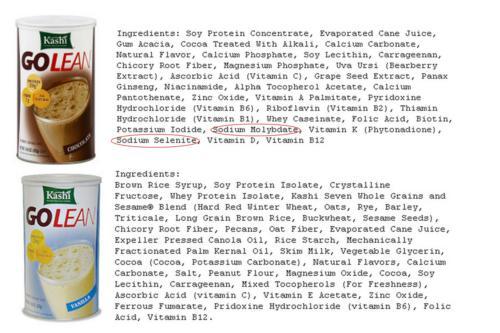Texture: Rich and airy
Taste: Taste like a mousse (light and mild flavour)
Nutrition: As you probably guessed, the nutrition has been sacrificed to make way for the texture. With all the extra air that's pumped in, there's less room for actual yoghurt in the container; which is obvious when you look at the net weight.
Some whipped yoghurts hold 2 to 4 ounces in a container, rather than the usual 6 or 8 ounces. Less yoghurt in the container means less pro-biotic, less protein and less calcium per bite. These varieties are also more likely to carry a high percentage of sugar and fat.
For Instance: Yoplait's whipped Strawberry Mist, is made with whole milk and has about 3 grams of fat in 4 ounces. Obviously, 6 ounces of this product would have a higher fat content. Comparatively, Yoplait's Original version contains about 2 grams of fat per 6 ounces. Then again these are made with skimmed milk.

Bottom Line: Lower-calorie and smaller package equates to less nutritious. For an everyday staple go with the Greek Yoghurt versions. These contain 0 grams of fat and 12 grams of protein per 6 ounces. Be sure to add some chopped nuts or home-made granola, handful of muesli for added texture and a completely satisfying snack.
For More Related Posts
Food Label Detective
Taste: Taste like a mousse (light and mild flavour)
Nutrition: As you probably guessed, the nutrition has been sacrificed to make way for the texture. With all the extra air that's pumped in, there's less room for actual yoghurt in the container; which is obvious when you look at the net weight.
Some whipped yoghurts hold 2 to 4 ounces in a container, rather than the usual 6 or 8 ounces. Less yoghurt in the container means less pro-biotic, less protein and less calcium per bite. These varieties are also more likely to carry a high percentage of sugar and fat.
For Instance: Yoplait's whipped Strawberry Mist, is made with whole milk and has about 3 grams of fat in 4 ounces. Obviously, 6 ounces of this product would have a higher fat content. Comparatively, Yoplait's Original version contains about 2 grams of fat per 6 ounces. Then again these are made with skimmed milk.

Bottom Line: Lower-calorie and smaller package equates to less nutritious. For an everyday staple go with the Greek Yoghurt versions. These contain 0 grams of fat and 12 grams of protein per 6 ounces. Be sure to add some chopped nuts or home-made granola, handful of muesli for added texture and a completely satisfying snack.
For More Related Posts
Food Label Detective
















